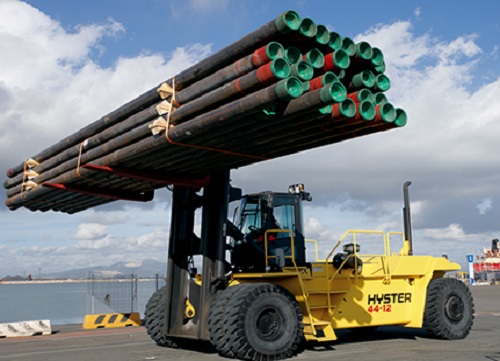There is a wear mark line on the sidewall marking of the forklift tire. Please replace the tire in time within this mark line during use. When it is used close to the wear mark line, it should be replaced.
2. The rubber falls off and falls off
During the use of the forklift, if the tire rubber falls off or falls off in a large area, please replace the tire in time; continuous use will result in reduced driving comfort, increased operating strength, increased energy consumption, and even potential safety hazards.
3. The local wear area is too large
If the local wear area of the tire rubber is too large, or there are many wear parts, the tire should be replaced.
4. Choose suitable tires for different working conditions
The rear wheel (guide wheel) of the counterbalanced forklift bears a greater load than the front wheel under no-load conditions, because there is a counterweight at the rear of the forklift, so if it works for a long time, the rear wheel will be damaged in advance;
That’s why routine inspections of forklift tires are critical, and your storage truck operators should inspect them for wear and damage before each operation, and if problems are detected early, they can “prevent problems before they happen.”
Change tires according to specific usage
According to the degree of tire wear and damage:
1. Pneumatic solid tires (ordinary solid tires): When worn to the wear mark line, they should be replaced in time.
2. Press-fit tires: When the remaining rubber thickness is less than 30%, it should be replaced in time.
3. When the tire is seriously damaged or abnormal, it should be replaced in time.
Necessary to replace tires is to keep costs down.
Replacing tires requires an investment, but new replacement tires benefit the forklift operator and your plant. There is no doubt that for the forklift, it is to obtain maximum efficiency, which can improve work efficiency and reduce fuel consumption. New tires can also minimize shock. , can create more comfortable driving performance for operators, they can reduce fatigue and concentrate on work. Necessary replacement can actually reduce maintenance costs, and the replaced tires can improve work efficiency.
Although it's a necessary expense, there are a few ways to reduce the cost of replacing tires:
1. If the use environment permits, you can choose a smooth solid tire without a pattern, which can increase the contact area between the tire and the ground and reduce the wear speed of the rubber.
2. For non-special working conditions, choosing high-quality solid tires to replace pneumatic tires can greatly extend the replacement time and avoid a large number of tire maintenance, reduce downtime and improve safety.
Now that you know how to prolong the life of your forklift tires, it is recommended that you follow the correct maintenance methods to maximize their performance and help you choose the right type for your forklift, thereby increasing productivity and reducing costs.




 Français
Français
 عربى
عربى
 Español
Español















